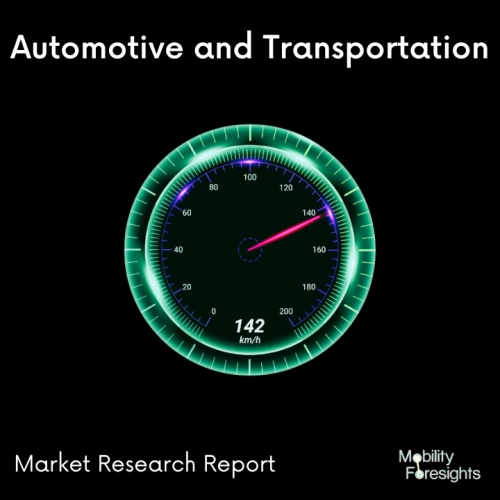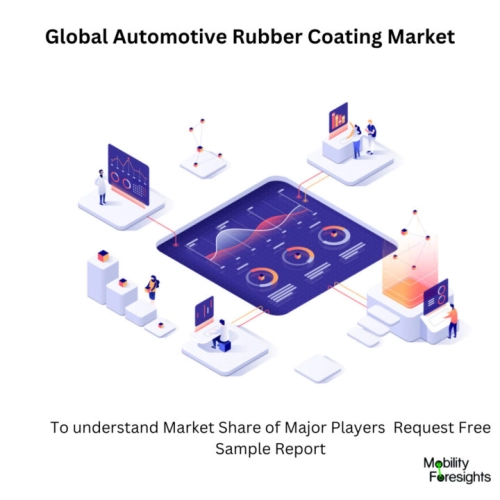
- Get in Touch with Us

Last Updated: Apr 25, 2025 | Study Period: 2024-2030
Specifically for vehicles, automotive rubber coating is a protective solution. It is a resilient and adaptable coating that is applied to different automotive parts to offer defence against the elements, abrasion, corrosion, and other types of harm.
Surfaces like bumpers, trim, door handles, fenders, and other exterior parts frequently have rubber coatings applied to them. They can also be used inside a car, providing defence for things like the console, door panels, and the dashboard.
The main goal of automotive rubber coating is to protect the surfaces of the car against deterioration brought on by regular use and exposure to hostile environments.
The underlying materials are protected by it from moisture, UV rays, chemicals, and impacts by acting as a barrier.Rubber coating's capacity to provide a non-slip surface, improving grip and minimising unintentional slips or falls when engaging with coated parts, is one of its key benefits. The coating can also give the car a smooth, matte, or textured finish, increasing its overall appearance.
Automotive rubber coatings frequently come in spray or brush-on forms, making them simple to apply. They effectively attach to a variety of surfaces, such as metal, plastic, and rubber, forming a robust barrier of protection.
They can also be altered in terms of colour and thickness to accommodate personal tastes.Although rubber coatings provide a lot of protection, they are not always effective and may need to be reapplied from time to time.
To guarantee optimum performance, it's crucial to adhere to the manufacturer's application and maintenance guidelines.Overall, automobile rubber coating offers a practical way to safeguard a car's surfaces, increase its durability, and enhance its aesthetic. It is a well-liked option among auto owners and enthusiasts who are looking for a flexible and dependable protective solution.

The global automotive rubber coating market accounted for $XX Billion in 2023 and is anticipated to reach $XX Billion by 2030, registering a CAGR of XX% from 2024 to 2030.
The 2nd Skin Peel-Off Coating was introduced by the Valspar Corp., who claimed it was made to provide a range of vehicle surfaces a hard, rubberized finish.
These shields were created especially to preserve and restore rubber and vinyl surfaces. They offer an additional layer of UV defence, guard against fading and cracking, and leave a rich, non-greasy finish.
| 1 | Market Segmentation |
| 2 | Scope of the report |
| 3 | Abbreviations |
| 4 | Research Methodology |
| 5 | Executive Summary |
| 6 | Introduction |
| 7 | Insights from Industry stakeholders |
| 8 | Cost breakdown of Product by sub-components and average profit margin |
| 9 | Disruptive innovation in the Industry |
| 10 | Technology trends in the Industry |
| 11 | Consumer trends in the industry |
| 12 | Recent Production Milestones |
| 13 | Component Manufacturing in US, EU and China |
| 14 | COVID-19 impact on overall market |
| 15 | COVID-19 impact on Production of components |
| 16 | COVID-19 impact on Point of sale |
| 17 | Market Segmentation, Dynamics and Forecast by Geography, 2024-2030 |
| 18 | Market Segmentation, Dynamics and Forecast by Product Type, 2024-2030 |
| 19 | Market Segmentation, Dynamics and Forecast by Application, 2024-2030 |
| 20 | Market Segmentation, Dynamics and Forecast by End use, 2024-2030 |
| 21 | Product installation rate by OEM, 2023 |
| 22 | Incline/Decline in Average B-2-B selling price in past 5 years |
| 23 | Competition from substitute products |
| 24 | Gross margin and average profitability of suppliers |
| 25 | New product development in past 12 months |
| 26 | M&A in past 12 months |
| 27 | Growth strategy of leading players |
| 28 | Market share of vendors, 2023 |
| 29 | Company Profiles |
| 30 | Unmet needs and opportunity for new suppliers |
| 31 | Conclusion |
| 32 | Appendix |